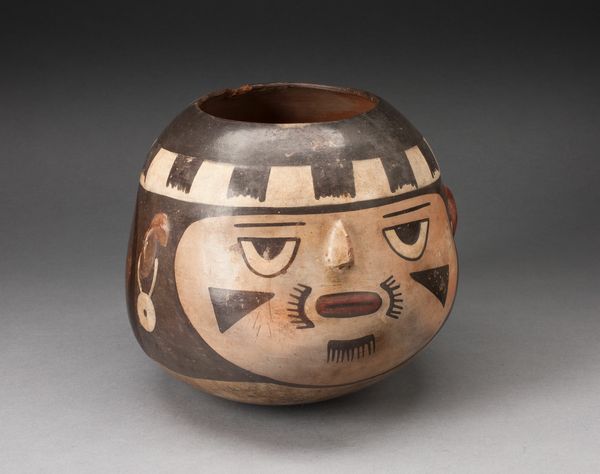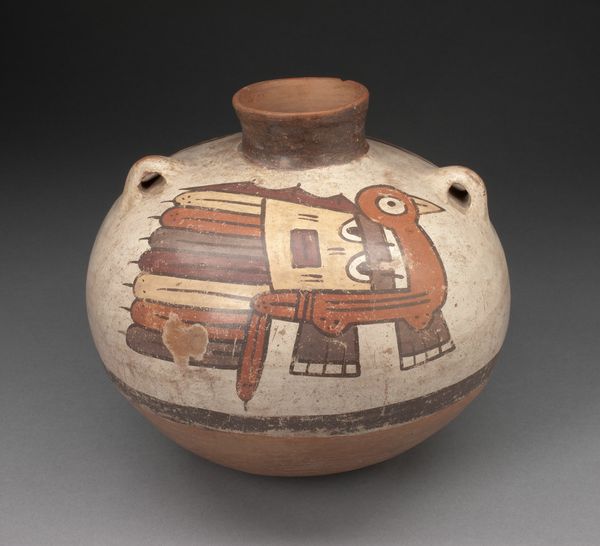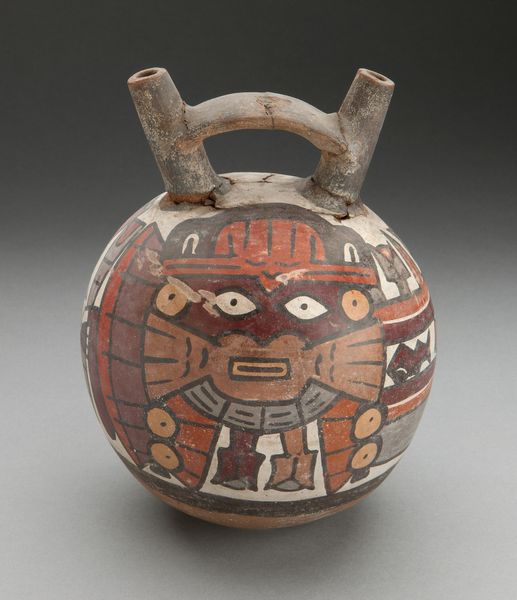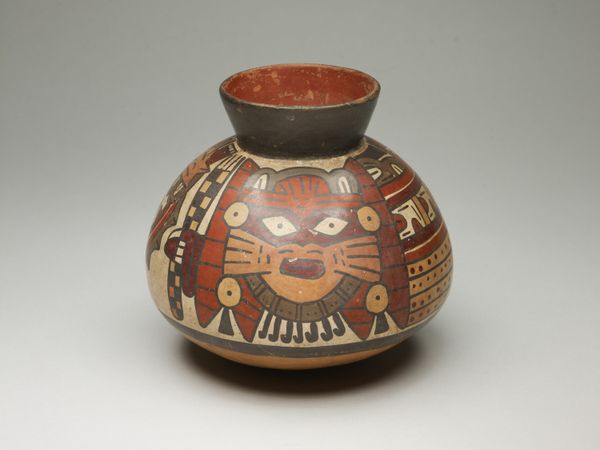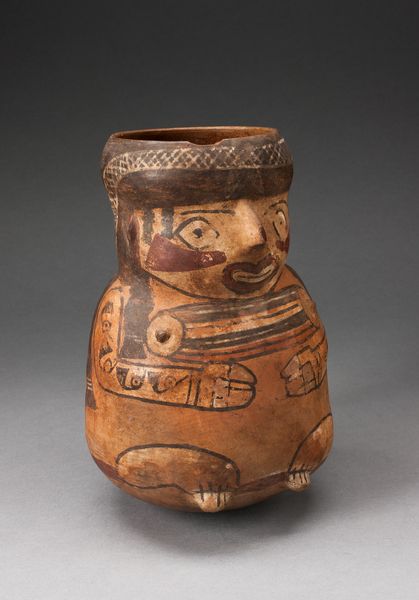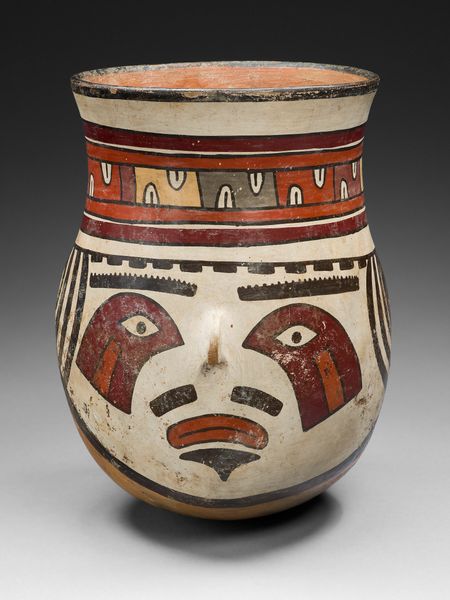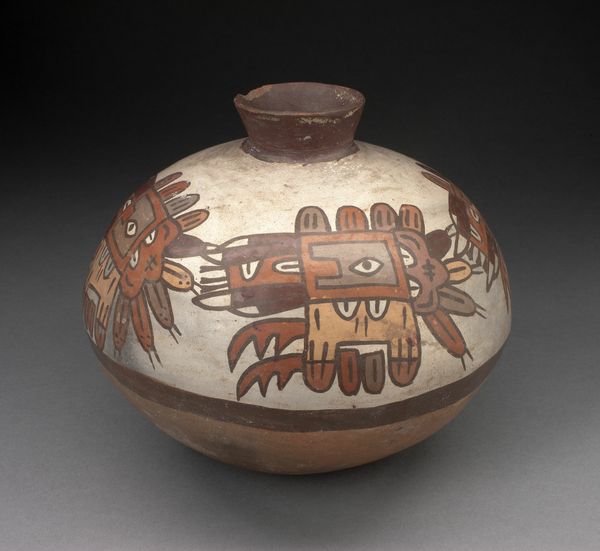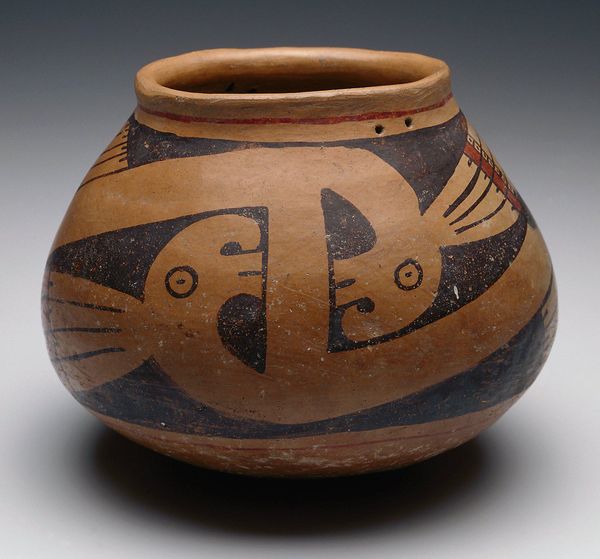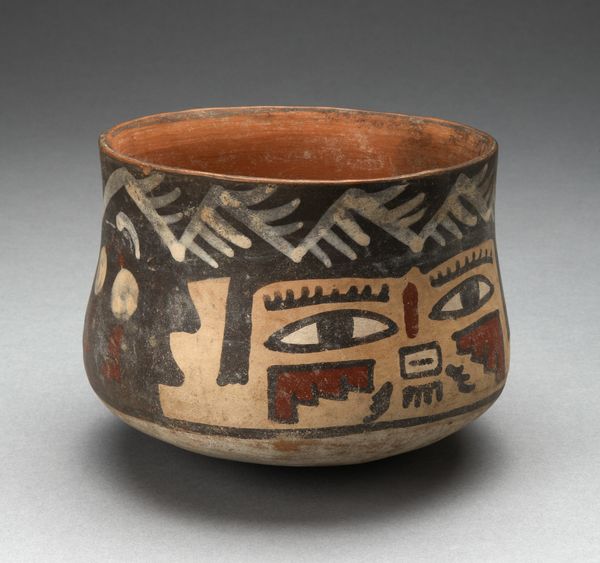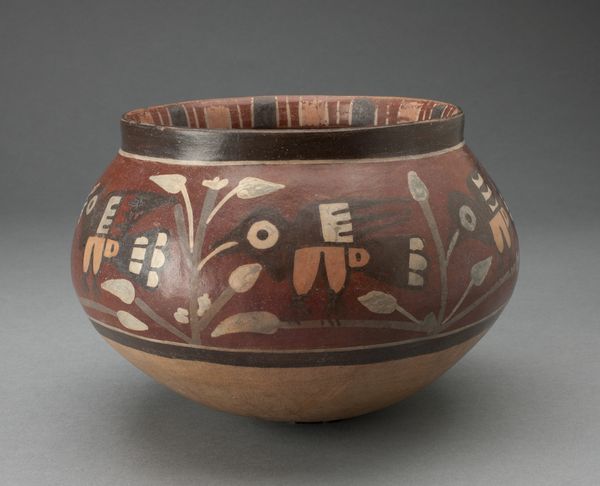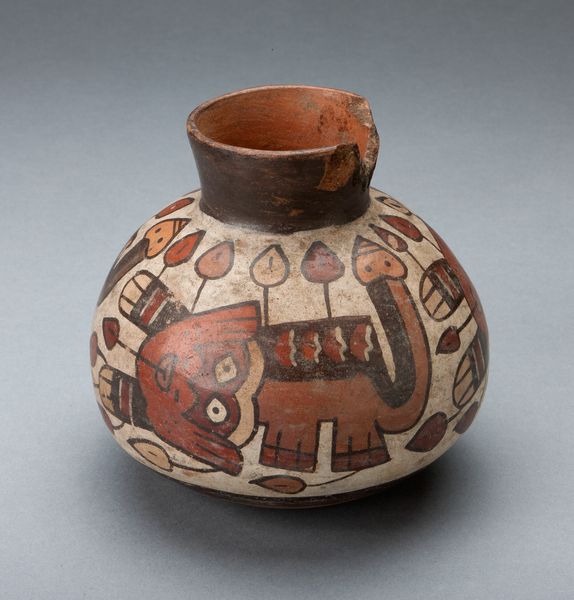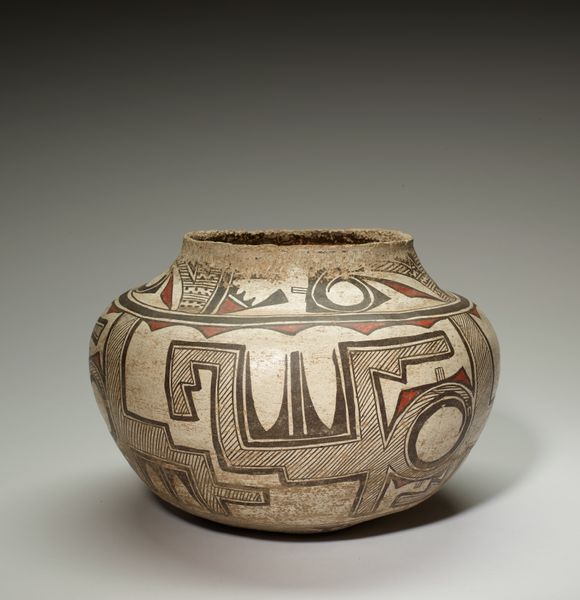
ceramic, earthenware
#
ceramic
#
figuration
#
earthenware
#
geometric
#
earthenware
#
indigenous-americas
Dimensions: 29.5 × 28.3 cm (11 5/8 × 11 1/8 in.)
Copyright: Public Domain
Curator: We’re looking at an earthenware jar created around 650 CE by the Paracas people. It’s entitled "Jar with Anthropomorphic Figure," and is currently housed at The Art Institute of Chicago. Editor: Wow, this piece has a charming, almost disarming simplicity. It’s got this big, friendly face that seems to say, "Welcome! I’m just a vessel, but I’m also your pal." Curator: Vessels like this played a crucial role in Paracas society, likely in ritual or funerary contexts. They tell us about Paracas cosmology and their ways of life. The image of an anthropomorphic figure is common in their art, acting as a representation of deities or perhaps even esteemed ancestors. Editor: It strikes me as both sophisticated and naive at the same time, you know? The patterns are so deliberate, and the painting—especially those boxy, smaller figures around the central face—seems careful, yet there’s something incredibly raw and honest about the whole piece. It has an appealing texture, doesn't it? Curator: Yes, this tension is so representative of so many pieces of art from that period, because you must recall that many ancient American artworks were influenced by the introduction of the "idea" of the modern, yet also retained all of its historical, original qualities. So it might resemble work made by so called "outsider artists." The materials available obviously would contribute as well, it looks to be coil built with slip decoration? Editor: Possibly, the color is so wonderfully faded now, muted and organic. The simple color scheme and geometrical patterning creates such an honest statement. Makes me think, "what sort of contents would suit a vessel this serene?" Curator: Given what we know of Paracas culture, perhaps maize or chicha, a ceremonial beer, or maybe even as burial offerings. That actually makes me think a bit about who decides its a piece of 'art', versus a ritual tool. What are your feelings about the place for such pieces inside art museums? Editor: Ah! The heart of the matter! In that sense it truly echoes with ancient song lines that ripple throughout our modern constructions and categorizations! And that sort of echo definitely enriches its space and reception within a modern art museum, where you now know a lot more about it, just by sharing what you've learned! Curator: Precisely. I think studying these things makes one contemplate all that has been "art-ified," and what never was, despite having deep aesthetic power, within different historical frameworks. Editor: Absolutely! This jar, it’s not just pottery, it’s an enduring hello from a whole culture, handed straight through time.
Comments
No comments
Be the first to comment and join the conversation on the ultimate creative platform.
